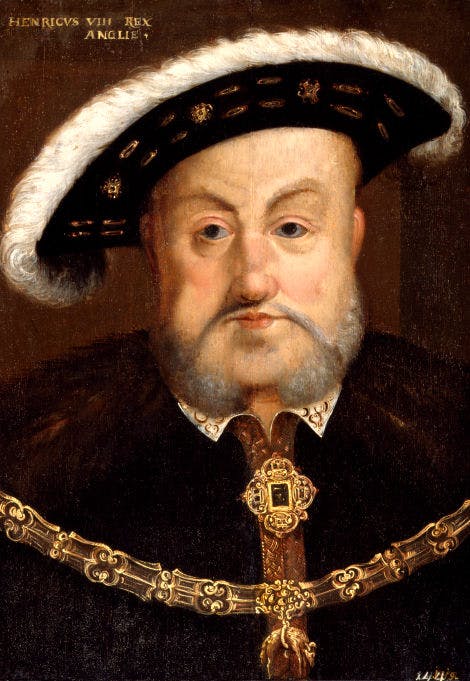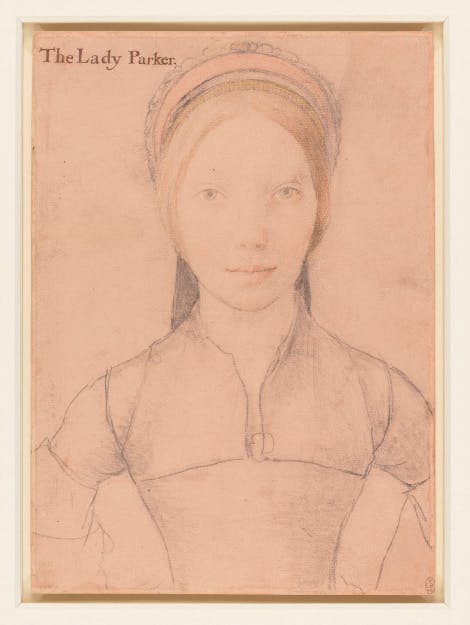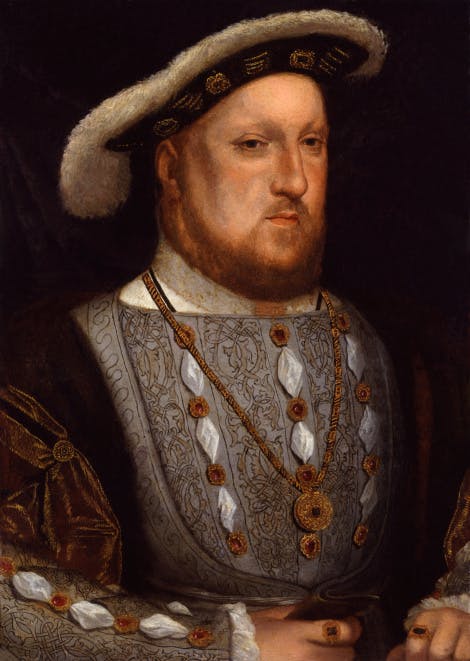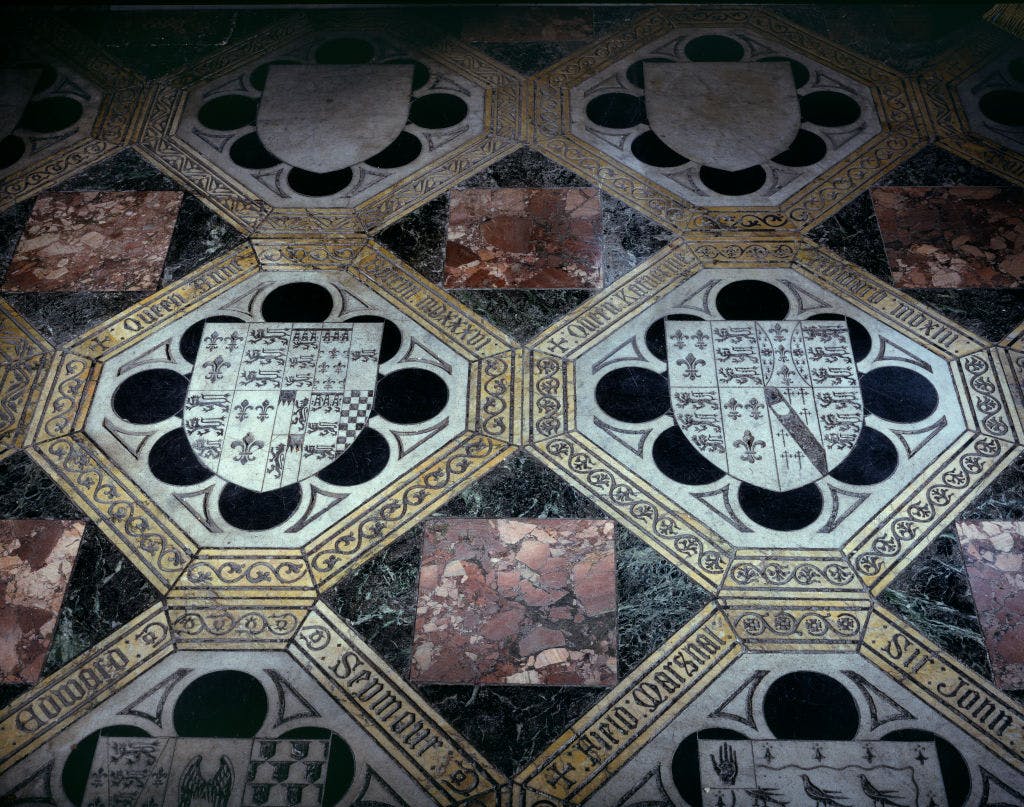
A young woman whose marriage to Henry VIII would end in tragedy
The Magic Garden is closed 02 January 2026 due to adverse weather conditions.
Catherine Howard was the fifth wife of Henry VIII. She was probably just a teenager when he chose her to be his Queen; he was more than 30 years her senior. Although the King called Catherine his 'rose without a thorn', it soon became clear that she had a scandalous past – and present. Catherine was found guilty of adultery and executed at the Tower of London in 1542.
Header image: Portrait of a Lady, thought to be Catherine Howard (oil on panel), Holbein the Younger, Hans (1497/8-1543) (follower of). Hever Castle Ltd, Kent, UK / Bridgeman Images
When was Catherine Howard born?
The few surviving records of Catherine Howard’s early life suggest that she was born between 1518 and 1524, probably nearer the latter year.
The Howard family tree
Catherine was a member of the powerful Howard family, albeit a junior branch with little fortune. Her father, Edmund Howard, was a younger son of Thomas Howard, 2nd Duke of Norfolk, who served four monarchs. This made Catherine the niece of the Duke of Norfolk, one of the most powerful noblemen in England. Her mother was Joyce (or Jocasta) Legh, daughter of Sir Richard Culpeper of Aylesford, Kent.
Catherine had numerous siblings and half-siblings. Her mother Joyce may have had five children from her first marriage and about the same number from her second, to Catherine’s father Edmund Howard.
How was Catherine Howard related to Anne Boleyn and Jane Seymour?
Catherine was the first cousin of Anne Boleyn, Henry VIII’s scandalous second wife – her father was the brother of Anne’s mother. She was also second cousin to his third wife, Jane Seymour – her grandmother Elizabeth Tilney was the sister of Jane’s grandmother Anne Say.
Catherine or Katherine?
Spelling was by no means consistent in Tudor times. Catherine's name is sometimes spelt with a 'C' and at others with a 'K'. It was not unusual for a person to write their own name in a number of different ways. We have used a 'C' to help distinguish this Catherine from her successor, Henry VIII’s sixth wife Katherine Parr.
Catherine Howard's early life
Catherine’s mother died when she was young, and Catherine was brought up by her father’s stepmother, Agnes Tilney, Dowager Duchess of Norfolk at Chesworth House near Horsham, Sussex, and at Norfolk House, Lambeth, in London.
Agnes superintended Catherine’s education, which was typical of that for most young women from noble households and included reading, writing and music. Catherine was raised a Catholic, but she was not particularly pious.
Relations with Henry Manox
Catherine might have been as young as 12 when her music teacher, Henry Manox, took sexual advantage of his position, although he stopped short of intercourse. When the Dowager Duchess found the couple embracing, she struck Catherine, even though she herself had been at fault for failing to guard Catherine's honour as custom dictated.
Relationship with Francis Dereham
When Catherine was around 14 years old, by which time the household had moved to Lambeth in London, she became sexually involved with her kinsman, Francis Dereham, who had recently been appointed secretary to the Dowager Duchess. This time, there was no doubt that it was a full-blown sexual liaison: they even addressed each other as ‘husband’ and ‘wife’.
According to the later testimony of one of Catherine’s roommates, there was much ‘panting and puffing’ in the communal bedchamber and they were forever 'hanging together by the belly like sparrows'. Catherine herself later admitted that she knew how to ‘meddle’ with a man without conceiving a child, which suggests she was sexually experienced.

Image: An unknown woman engraved as Catherine Howard by Francesco Bartolozzi, published by John Chamberlaine, after Hans Holbein the Younger. © National Portrait Gallery, London
What did Catherine Howard look like?
Judging from the male attention she received, Catherine was attractive, although the French ambassador described her as short and graceful rather than beautiful. She had an appealing personality and loved music and dancing. She seems to have been popular with the other members of the Dowager Duchess’ household.
No confirmed portraits of Catherine survive. A portrait miniature by the celebrated court painter Hans Holbein is thought to depict Catherine because it is dated 1540 (the year of her marriage to Henry VIII) and her necklace closely resembles that seen in portraits of his other wives.
Three other portraits have been linked to Catherine: Holbein’s painting of a woman dressed in black, Portrait of a Young Woman by a member of Holbein’s workshop, and Portrait of a Young Lady by Lucas Horenbout. Debate still continues as to whether any of these likenesses is Catherine.
When did Catherine meet Henry VIII?
In March 1539, Catherine’s uncle, the Duke of Norfolk, secured her a prized position in the household of Anne of Cleves, who was set to become Henry VIII’s fourth wife.
Catherine may have met Henry VIII in December 1539, when he travelled to Greenwich to await Anne’s arrival. Then, after the King's disastrous first meeting with Anne, Norfolk likely chose his moment to push Catherine into Henry’s path.
By June 1540, Henry's interest in Catherine was known throughout the court. One observer noted that the King 'crept too near another lady', and Anne of Cleves herself complained that her new husband was attracted to Catherine.
For the ageing Henry, his new love interest held out the prospect of recapturing his lost youth. On 12 July 1540, Henry secured an annulment of his marriage to Anne.

Image: King Henry VIII after Hans Holbein the Younger. © National Portrait Gallery, London
The King's fifth wife: Catherine Howard marries Henry VIII
Henry married Catherine at Oatlands Palace in Surrey on 28 July 1540, the same day that his once all-powerful minister, Thomas Cromwell, was executed. On 8 August, Catherine was formally acknowledged as Queen at Hampton Court Palace.
'No other will but his'
Catherine adopted the motto 'Non autre volonté que la sienne', meaning 'No other will but his'. Sadly, this was to prove fitting, given the little free will Catherine had as Henry’s wife and Queen.
Henry and Catherine's Marriage
While Henry had apparently found Anne of Cleves repellant, he made his attraction to Catherine all too obvious. 'The King is so amorous of her that he cannot treat her well enough and caresses her more than he did the others', reported the scandalised French ambassador.
Catherine as stepmother to Henry VIII’s children
Catherine spent little time with her stepchildren, Mary, Elizabeth and Edward. Her relationship with Mary was strained – Mary was older than her stepmother, and disrespectful, although the relationship improved after Catherine dismissed two of Mary’s maids as punishment.
Her relationship with Elizabeth was more harmonious. The pair were related through Anne Boleyn, and Catherine gifted jewels to the young girl. Catherine also won favour with Prince Edward.
Did Catherine and Henry have children?
By the time he married Catherine, Henry was suffering from ill health – and, it was rumoured, impotence, so there was little prospect of any children. Court gossip claimed the Queen was pregnant in April 1541 but either she lost the child or, more likely, the rumours were unfounded.

Image: Portrait of a Lady, thought to be Catherine Howard, Holbein the Younger, © Hever Castle Ltd, Kent, UK/Bridgeman Images
What was Catherine Howard like as Queen?
Catherine appeared a gracious and conventional Queen. At her first court Christmas, she greeted her predecessor, Anne of Cleves, warmly. They exchanged gifts and even danced together.
At Greenwich in 1541, following the convention for royal consorts, Catherine successfully pleaded with her husband to pardon some prisoners. She later interceded on behalf of other prisoners and promoted the interests of her family.
But in one fundamental respect, Catherine flouted the behaviour expected of a Tudor Queen – and a wife. The fact that she was far from the virginal bride that Henry expected soon became all too obvious. A few months after becoming Queen, Catherine was aghast when her former lover, Francis Dereham, arrived at court and began pestering her for office, boasting to her councillors that she favoured him.

Henry VIII’s wives
Six queens, six women
These six queens consort all had one man in common. But is it possible to understand them as individuals, even after 500 years?
Catherine's affair with Thomas Culpepper begins
At the same time as Dereham’s reappearance, Catherine began to receive requests for favours from Thomas Culpepper, a Gentleman of the King's Privy Chamber.
Culpeper was distantly related to Catherine on her mother's side. Described as a ‘beautiful youth’, he was a sexual predator and there is evidence that he had previously been accused of rape and murder but escaped punishment thanks to his favour with the King.
Shortly before Henry’s 50th birthday on 28 June 1541, Catherine and Culpeper began an adulterous affair. When the young Queen accompanied the King on his summer progress, Culpeper went with them. According to later testimonies, Catherine and Culpepper conducted illicit meetings while the court travelled.
Did you know?
'Progress' is an old term for the monarch’s tour of their country.
Sealing her own fate: The Culpepper Letter
During the same summer, Catherine wrote a letter to Culpeper that would help seal her doom. In it, she affirmed: 'It makes my heart die to think I cannot be always in your company.' She signed the letter: 'Yours as long as life endures.'
Catherine Howard: an unwilling victim?
Catherine's letter to Thomas Culpepper has often been taken at face value – certainly it was at the time. But more recent interpretations suggest that its emotional tone was fuelled less by sexual desire than by the desperation of a young woman who was seeking to placate an aggressive, dangerous suitor.
Given his character, it is possible that Culpeper had established a threatening control over the young Queen, and that she was trying to appease him. Rather than being a willful adulteress, Catherine may have had as little agency in her relationship with Culpeper as with the other men in her life – the King included.
To make matters worse, it was during the same progress that Catherine gave in to Dereham’s demands and appointed him her secretary.

Image: This portrait, inscribed 'The Lady Parker', has been suggested to be a likeness of Jane Boleyn, Catherine’s lady in waiting. Royal Collection Trust / © His Majesty King Charles III 2023
Rumours of adultery reach Henry VIII
In October 1541, the Archbishop of Canterbury, Thomas Cranmer, was informed of Catherine’s premarital liaisons by a former member of the household at her childhood home. Cranmer was given the unenviable task of breaking the news to Henry, and left a written summary for the King in the chapel at Hampton Court Palace.
Henry’s first reaction to the accusations was disbelief. He ordered an immediate inquiry, which soon proved the truth of the allegations – and uncovered more besides. Jane Boleyn, Lady Rochford (widow of Anne Boleyn’s brother George), a close attendant of the Queen, was interrogated and eventually confessed to having facilitated her meetings with Thomas Culpeper.
Catherine's confession
On 8 November, the Queen herself confessed. She said that Francis Dereham had used her 'in such sort as a man doth use his wife many and sundry times'. Catherine also admitted to having sexual encounters with Henry Manox and later confessed to an affair with Thomas Culpeper. In reporting her testimony to the King, Cranmer remarked that he had found her in 'lamentation and heaviness, as I never saw no creature'.
Confronted with the truth about Catherine's past, Henry was plunged into a deep depression from which he never fully recovered. He had adored his young wife and had had no notion of her infidelity.
Condemned to death
On 14 November 1541, Catherine was moved to the former monastery of Syon, and eight days later was deprived of her queenship. Thomas Culpeper and Francis Dereham were convicted of treason on 1 December and executed shortly afterwards.
Catherine and Lady Rochford were condemned under a bill of attainder on 21 January 1542. It stipulated that any future queen who failed to disclose her unchaste past would be guilty of treason.
Execution at the Tower of London
On 10 February 1542, Catherine was taken by barge to the Tower of London. As she passed under London Bridge, she would have likely seen the rotting heads of Thomas Culpeper and Francis Dereham.
Three days later, at 9am on 13 February 1542, Catherine faced her execution at the Tower. So weak that she had to be supported onto the scaffold, she gathered enough strength to confess that her sentence was justified. Moments later, the axe fell.
Catherine Howard may have been as young as 18 when she died.
Where is Catherine Howard buried?
On the same day as her execution, without a funeral, Catherine’s remains were buried in the Chapel of St Peter ad Vincula at the Tower of London, along with those of her disgraced cousin, Anne Boleyn. Catherine’s attendant, Lady Rochford, who was beheaded shortly after her mistress, was also buried there.

Image: Haunted Gallery and Processional Route at Hampton Court Palace, within the Tudor State Apartments. © Historic Royal Palaces
Catherine's 'ghost' at Hampton Court Palace
It is said that Catherine’s agonised screams can sometimes be heard along the Haunted Gallery at Hampton Court as she tries desperately to reach the King and plead forgiveness. It is a beguiling story but, even if Catherine had tried to flee her captors, her original apartments no longer exist and the route that she would have taken would not have included this gallery.
Nevertheless, there have been more reported ghostly sightings – and faintings – along this stretch of the Tudor route than anywhere else in the palace.
Further reading
- Gareth Russell, Young and Damned and Fair: The Life and Tragedy of Catherine Howard at the Court of Henry VIII (William Collins, 2018)
- Alison Weir, The Six Wives of Henry VIII (Vintage, 2007)
- Tracy Borman, The Private Lives of the Tudors (Hodder & Stoughton, 2017)
- Julia Fox, Jane Boleyn: The Infamous Lady Rochford (Weidenfeld & Nicolson, 2009)
Listen to the podcast
The Six Tudor Queens: Catherine Howard
In this episode of the podcast series 'The Six Tudor Queens', Historic Royal Palaces' joint Chief Curator Tracy Borman is joined by historian and author Gareth Russell, to bring Catherine to life.
Catherine Howard has been judged by generations as promiscuous, a silly girl, a victim. But of course, there is more to her story than these assumptions allow for. In this episode, Tracy and Gareth paint a picture of a vivacious young woman whose life deserves to be revealed without the layers that centuries have placed upon her.
More episodesPodcast Transcript
Browse more history and stories

Henry VIII, Terrible Tudor?
Who was the real Henry VIII?

The Field of Cloth of Gold
Henry VIII's historic meeting with his great rival François I in 1520 was a defining point in his reign

The Elizabethan era: a golden age?
Was the Elizabethan period really a 'golden era' of English history?
Explore what's on

- Families
- Half term
- Things to see
February Half Term
Join a royal quest this half term with Elizabeth I at Hampton Court Palace.
-
14 – 22 February 2026
- 10:00-16:00
- Hampton Court Palace
- Included in palace admission (Members go free)

- Things to see
Hampton Court Gardens
Take time to explore and relax in these world-renowned gardens and find our free entry Garden Open Days dates.
- Open
- In line with palace opening hours
- Hampton Court Palace
- Included in palace admission (Members go free)

- Things to see
Pond Gardens
Discover the sunken gardens created for Henry VIII and transformed by Mary II.
-
Open
- In line with palace opening hours
- Hampton Court Palace
- Included in palace admission (Members go free)
Shop online

Christmas homepage banner - Henry VIII and Six Queens Decoration Set
Christmas Homepage Banner - Henry VIII and Six Queens hanging decoration set on a Christmas tree at Hampton Court Palace.
£70.00

Shop Tudors
Find the perfect gift for collectors and history enthusiasts in our treasure trove of souvenirs inspired by this ever-fascinating dynasty.
From £3.00

Shop Goblets & Tankards
Discover our decadent range of goblets and tankards inspired by the palaces in our care, the perfect gift for any history fan.
From £10.00


